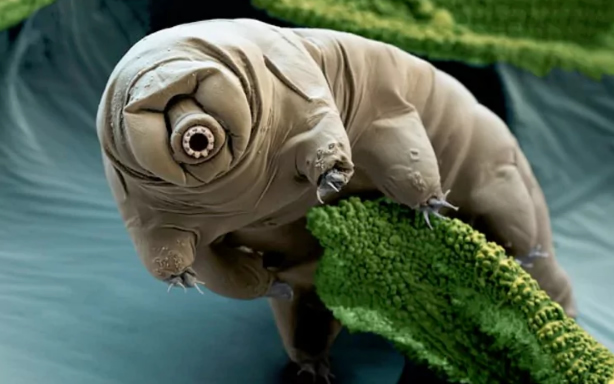Let's Meet Tardigrade, the Survivor! [Amazing Creatures of the Deep Series]
I have been reading several extremely interesting and educational articles in steemit and I admit I am really impressed. From amazing outer space planets, to very interesting discovery related articles, funny, impressive animals and travels to the moon, to becoming undead (Oh what an article that was!)
So, I have decided to start a series of articles regarding some amazing creatures from the deep. I really hope you enjoy it, I have discovered some crazy facts that should be shared! Nature is really wonderful to explore and if we look deep into it, we might understand our own existence better.
Without loosing any more time with prologues, I am introducing herewith the start of my series:
Amazing creatures of the deep: Introducing a tiny little creature, that will outlive all humans; it has the ability to survive extreme conditions and as a matter of fact it can survive until the Sun dies. (literally)

Tardigrade, or the little water bear. An intimidating tiny fella with superpowers!
This impressive little guy, the Tardigrade, is an eight-legged microbeast that beats the cockroaches in resilience!
Tardigrades (and if it is not easy to say it out loud you can use the most common names such as space bears or moss piglets), are micro animals that are never more than 1.5mm long (this when they are fully grown) and can only be seen with the use of a microscope.

The water bears were first discovered in 1773 by German Zoologist Johann August Ephraim Goeze

The original name of this species was kleiner Wasserbär(Bärtierchen today) that means “little water bear” in the German language.
The name Tardigrade was attributed to them 3 years later by Lazzaro Spallanzani (Italian biologist and physiologist), their name meaning ‘slow stepper’ because they move very slowly.
Tardigrade the Survivor!
Tardigrades can be brought back to life even after spending 30 years under frost. Scientists in Japan have managed to revive 2 of the creatures that were at -20C for more than 30 years. As a matter of fact one of them was reproduced successfully, hatching 14 eggs!
This is actually a record break, as the previous survival record (for adult tardigrates) under the same conditions was approximately 8 years.
Tardigrade the Cosmonaut!
In 2007, Tardigrades joined a project called “Biokis Project”
In one of the experiments of the project, thousands of tardigrades were attached to a satellite and went to outer space. After the successful return of the satellite to Earth, scientists discovered that many of them not only had survived, but many females had even laid eggs in space, that were hatched with success to tiny new-borns!
Tardigrade the Immortal!
Dr David Sloan, Co-author and Post-Doctoral Research Associate in the Department of Physics at Oxford University, said: “To our surprise we found that although nearby supernovae or large asteroid impacts would be catastrophic for people, tardigrades could be unaffected. Therefore it seems that life, once it gets going, is hard to wipe out entirely.
How do they look?
If you look at them closely, with a microscope, you could easily get scared. They have a very intimidating face with dagger-like teeth and ferocious little claws in their 4 pair of legs!

But as we said before, there is no need to worry. . They are only a few millimeters long and most of them feed by sucking juices from moss and lichens. Some of the 100 known species are carnivores but I don’t think this would scare you!
Where do the Tardigrades live?
The Tardigrades have been discovered in many different places, at the bottom of the ocean, in Antartica, in Japan or even up a mountain in the Himalayas!
They seem to be able to survive in extreme conditions and it is worth to mention that according to studies they have been able to survive without any food for 30 years (half of their life)
An ancient, special animal that will outlive us all
Scientists have discovered fossils of tardigrades that date back to a period over 500 million years ago! And one thing is certain, they have a lot to teach us! Their species has managed to evolve and cope with extreme environments that do not even exist on planet Earth!
It was really fun researching for this, I hope you enjoyed it and if yes, I will be happy to do more research in the near future!
@katerinaramm
source - bbc.com
source - telegraph.co.uk
souce - washingtonpost.com
source - bbc.co.uk
source - wikipedia
source - telegraph.co.uk









Comments